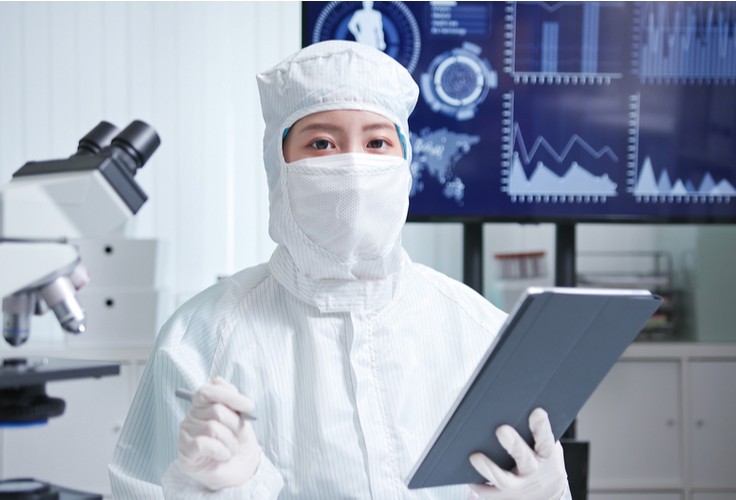
Safety is paramount in the cleanroom, especially for those working in particularly hazardous environments and testing rooms. The best safeguards against unexpected incidents, emergencies and accidents are understanding and following proper cleanroom protocols, guidelines and rules — to protect personnel, maintain the integrity of the cleanroom and the work at hand. In this piece, we will look at some of the most effective ways to protect yourself and the facility.
Cleanroom Guidelines and Protocols for Personal Safety
Throughout every process in the facility, personal safety should remain the primary concern to keep workers safe and healthy.
The below guidelines provide a strong basis for how to remain safe in the cleanroom:
- Understand and abide by PPE requirements for the materials at hand: Masks, bouffants, gloves, shoe covers, and gowns are typically the minimum required equipment for any cleanroom application, protecting the worker as well as the cleanroom environment. Different chemicals and materials, however, will have different PPE guidelines, so be sure to understand what you are working with before entering the cleanroom. Also, properly wear and use the required PPE at all times.
- Review proper handling procedures: As above, individual chemicals and materials will have unique handling requirements on account of volatility, flammability, fume generation, potential for contamination or to be contaminated and more. All personnel in the cleanroom must understand proper handling requirements for the materials in use so they and products remain safe.
- De-gown fully and properly anytime you leave the cleanroom: Whether for a bathroom break or the end of the work session, proper de-gowning procedures must be followed whenever you leave the cleanroom. This helps to assure that contaminants do not make their way from the cleanroom into the ambient environment and protects you from fumes and other potentially harmful materials. Never wear PPE that has been exposed to unclassified areas back into the cleanroom.
- Take care in every action and movement in the cleanroom: Move slowly and with caution whenever you are in the cleanroom, and especially when you are handling materials. Taking caution with your movements can reduce particulate generation, the chances of accidents, drops, collisions and other events that could lead to dangerous outcomes such as spills.
Cleanroom Rules and Guidelines for Facility Integrity and Equipment Precautions
Aside from personal safety, it is important to follow proper procedures to maintain the right environmental levels for the cleanroom and its equipment.
Tips for this include:
- Follow proper gowning procedures when entering the cleanroom: Ensuring that you follow defined protocol for gowning is the most effective way to prevent outside contaminants from entering the cleanroom environment. This includes donning PPE in the proper order, wearing the correct size PPE, and more.
- Follow proper handwashing protocol: General rules include cleaning with soap and water for at least 30 seconds; checking that water is not too hot to prevent dry or flaking skin; using low lint towels; never shaking hands or gloves to speed drying; and other facility-specific protocols. Hand sanitizers are often utilized in cleanroom gowning protocols but should not be used on gloves as residues can occur from ingredients intended to reduce drying out skin.
- Leave all unnecessary materials outside the cleanroom: This includes, keys, wallets, watches, phones and more — all of which are rife with contaminants and are not needed in the cleanroom. The facility should provide lockers or other secure storage and should include dedicated equipment (such as computers and clocks) within the cleanroom for communication, recordkeeping and timekeeping.
- Follow proper wipe-down procedures: Work areas must always be wiped at the end of a shift or work session. For some types of materials or cleanroom standards, wipe-down should occur as often as every 30 minutes. Be sure to understand the proper procedure for the cleanroom and materials in use.
With these tips in mind, you are now better equipped to keep yourself safe in the cleanroom, so that the cleanroom remains clean and functional throughout testing and other processes.

